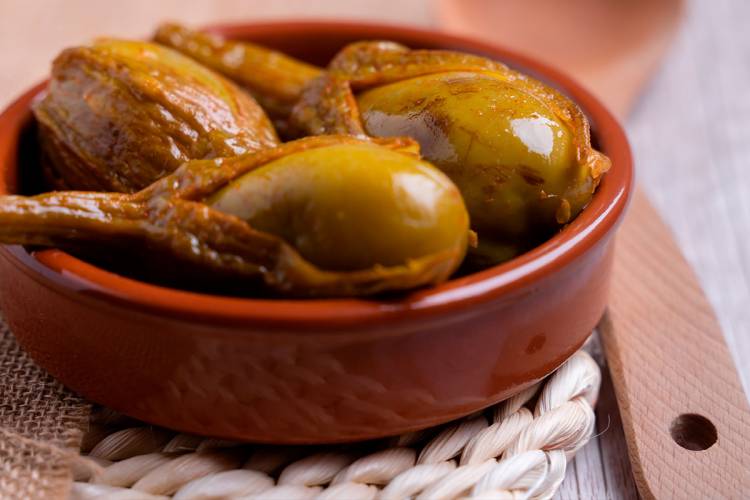Types of aubergines: an endless amount of varieties
There are many different types of aubergines. Find out about traditional and new varieties and discover some curiosities about each of them. Let’s go!
TRIED AND TESTED
Share

With a slightly bitter flavour and meaty textured flesh, the aubergine is a very versatile vegetable. The whole fruit is edible, although you need to remove the stem (the part that attaches it to the plant, which is very hard, and which may possible prick you when handled). The resulting flesh, what we normally eat, tends to be white or cream-coloured and characterised by its spongy nature. Inside the aubergine you will find seeds, usually concentrated in the lower part of the fruit and generally, they can be eaten without any problem.
Types of aubergines, As you can imagine, there are plenty. It’s a real stroke of luck that this should be so, because some varieties are more suitable for certain recipes, and there are even aubergine varieties of local or native origin, which always contributes to the enrichment of a region. Moreover, the aubergine is characterised by its low energy value (it is over 90% water), which makes it a food that is highly recommended for slimming or weight control diets, as well as for the general population. It doesn’t hurt to include the aubergine in your daily diet.
Aubergines also contain a lot of fibre and hardly any fat. But let’s get to what interests us: How many types of aubergines are there? Let’s take a look.
Types of aubergines
There are many varieties throughout the world. As a curiosity, Asian aubergines are unusual, as they are usually smaller or finer, although there are also similar specimens within our region. In Spain, aubergines tend to be classified based on different criteria: according to size, shape (oval, round, long...), colour (black, green, purple, white…) or according to colour distribution (uniform, striped, or a network pattern…).
The purple aubergine, for example, is one of the best-known varieties. It I almost black in appearance and has a rounded shape. Notable sub-types are the Bonica and the Black Beauty, whose fruits can weigh up to half a kilo. This is the most suitable aubergine for making thick soups or pates.

In Spain, on the other hand, we cannot overlook the Almagro aubergine. Among the types of green aubergines, this is undoubtedly the most special one within our borders. It is usually grown in the Calatrava region, in Ciudad Real, and is a product recognised by the Certificate of Origin mark. Among other Spanish types of aubergines of note, beyond the one from Almagro, are the intermediate, the striped, the round and the long ones, as well as others associated with geographical areas such as the Murcian, the Mallorcan and the llistada from Gandia.
As a matter of fact, the llistada from Gandia, differentiates itself from the others due to its fleshiness and because it has a certain saltiness. It is specially recommended for pistos and stuffing, and is most exquisite when grilled. The Murcian one is another green aubergine that you can find. In this case, it has a light green colour, few seeds and an oval fruit.
There are also types of white aubergines, although their colour has made them seem like a less aesthetic choice and they are not found as frequently in marketplaces. But incidentally, you should know that in Spain there are plans to reinstate the white aubergine in areas such as Cambrils (Tarragona) and El Bages (Barcelona).
The white aubergine is also characterised by a creamy texture and a firm centre that holds its shape particularly well when baked: perhaps because of this, it is usually recommended for baking. Other more exotic varieties of the white aubergine are the Japanese white egg, the cloud nine aubergine and the Laos white aubergine.
There are many aubergine varieties (as you have seen), but just one thing is certain: including the aubergine in your diet will always be a good idea.






